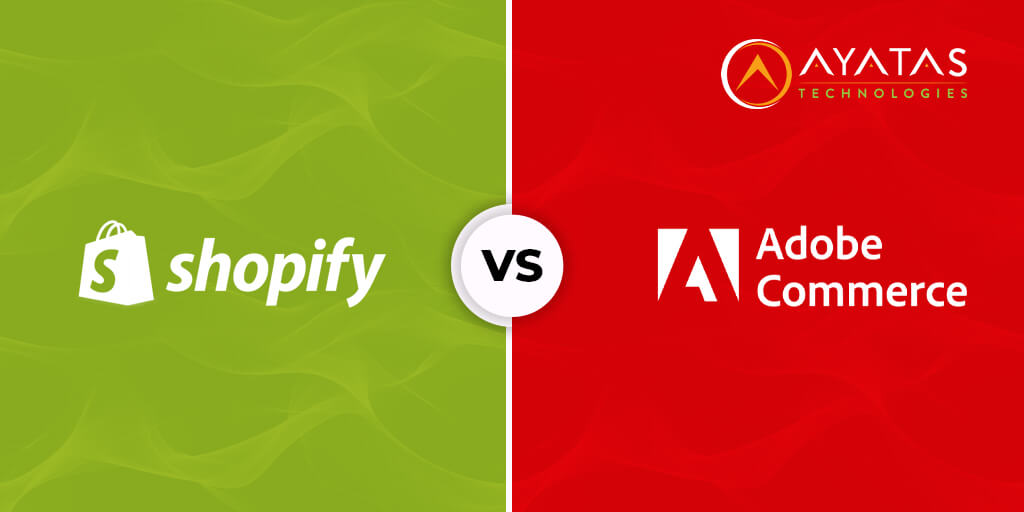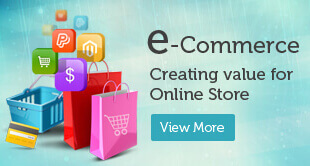
Shopify vs Adobe Commerce
If you are a business and looking to launch or upgrade your eCommerce business, then you might have heard of the two popular eCommerce platforms, Shopify and Adobe Commerce. They share similar features, pricing, and capabilities, but in reality, they differ in their own ways. You should evaluate the pros and cons of each platform and select the best one for your e-commerce store. In this article, we have mentioned the key differences, Shopify vs Adobe Commerce so you can decide which one suits your needs. So, let’s get started!
What Is Shopify?
Shopify was founded by Tobias Lütke and Scott Lake in 2006 as a closed-source software-as-a-service (SaaS). Today, over 4 million e-commerce websites worldwide use Shopify. It’s a hosted eCommerce platform, which means you can use it without hosting your software or website. This lets you fully control your online store without dealing with technical issues.
Shopify Pros and Cons
Pros:
- Easy to use
- Seamless tools and templates
- Every plan has various sales features
- Omnichannel sales support is available
- Works with a lot of integrations
- Built-in AI tools
- Can easily handle payment processing
Cons:
- Third-party gateways need transaction fees
- Website design has some limitations
- Expensive for small businesses
What Is Adobe Commerce?
Adobe Commerce is the first all-in-one solution for B2B and B2C businesses to create, manage, and sell products across various channels. With Adobe’s eCommerce platform, you can build a great customer experience across desktop, mobile, web, and social media. It is integrated with AI, which helps you improve your marketing and revenue. Adobe Commerce combines digital marketing and data to create personalized experiences for customers.
Adobe Commerce Pros and Cons
Pros:
- Various design options
- AI integrated
- Easy to use for any business size
- Great tools for tracking and analytics
- B2B and B2C selling options
- Works for various payment methods
Cons:
- If you are a beginner, you need little technical knowledge
- Depends on third-party apps.
- High Pricing
Shopify vs Adobe Commerce: Expert Comparison
Both Shopify and Adobe Commerce enable businesses to conduct their sales online. However, they differ in most aspects from what you might think. The key comparisons are mentioned below for you:
Type
Shopify is an all-in-one platform designed to launch your online store easily. Adobe Commerce is a complex platform, but it offers more flexibility than Shopify in terms of web design and customization. It is an open-source platform that provides a foundation for your store. All you need to do is customize it to meet your specific requirements.
Website Design and Development
Most businesses prefer Shopify for building their e-commerce websites due to its straightforward process. Design your store by selecting from the diverse range of themes available. Some of them might be paid ones. It is easy to use, and customization is made simple with a simple theme editor. You don’t need any prior knowledge to use Shopify, but you can still explore CSS and Java if you have specific requirements.
Adobe Commerce is a bit complex. It doesn’t offer as many templates as Shopify, but it does have a page builder with a drag-and-drop option. If you want to make the most of Adobe Commerce, you must have technical knowledge. Adobe Commerce offers more design options with a drag-and-drop page builder, but it lacks the extensive template library of Shopify. To get the most out of it, you need to have some technical knowledge.
Ecommerce and Sales Features
Shopify has a top-quality checkout and payment system, along with a built-in point-of-sale option. It integrates with marketplaces and social media, enabling sales across multiple channels. With the help of apps, you can accept almost any type of payment and sell any kind of product, including subscriptions and digital items. Shopify also provides shipping and fulfillment tools, enabling you to link your store to POD (Pickup on Demand) and dropshipping services, or utilize Shopify’s Fulfillment Network.
Adobe Commerce also supports multi-channel selling, featuring a channel manager for managing sales across marketplaces and other platforms. It doesn’t have a built-in POS system, but you can add an extension to enable this functionality. Through Adobe Commerce, you can sell any product and accept almost any payment method. However, you’ll need to install extra apps for payment processors like Stripe or Square, and setting up all your channels requires technical knowledge.
Marketing and Customer Experience
Shopify doesn’t have built-in marketing tools, but it does offer useful features such as blogging, social media, and email marketing integrations, as well as SEO capabilities to improve your store’s rankings. It also includes advanced marketing tools such as abandoned cart recovery and its own email marketing system. For companies with specific plans, Shopify enables the creation of dedicated store versions tailored to different markets.
Similar to Shopify, Adobe Commerce also lacks built-in marketing tools; however, it supports blogging, social media, and email marketing integrations, along with strong SEO capabilities. Regarding customer experience, Adobe offers the best with AI-powered solutions to create and optimize content, deliver real-time promotions, make product recommendations, and personalize site searches. Although it requires a more technical setup, Adobe’s AI tools enable businesses to create highly personalized shopping experiences.
Reporting, Analytics, and Integrations
Having clear insights into your business is crucial for success, and both Shopify and Adobe Commerce excel in this area.
Shopify provides you with daily sales reports on products, sales, and staff performance. You can also create reports for cash flow, retail sales, and finances. Additionally, Shopify seamlessly integrates with numerous apps, allowing you to consolidate all customer and profit data in one place.
Adobe Commerce also offers strong analytics and reporting tools, including custom dashboards and visual reports. However, unlike Shopify, Adobe doesn’t connect with most third-party tools, and its integration options are more limited overall.
Pricing Plans
Shopify pricing plans start at $29 per month and range up to $299 per month. It also offers an enterprise plan starting at $2,300 per month. If you use Shopify products, you won’t incur any transaction fees. However, if you use third-party payment processors, you will incur additional transaction fees. Also, if you want to sell your products through social media, you can opt for a starter pack for $5 per month.
Adobe Commerce’s pricing is more complicated than Shopify’s. There are two options: Adobe Commerce Pro and Managed Services. However, you will need to contact Adobe for a custom quote tailored to your specific needs. Since it’s an open-source platform, you’ll also incur additional costs, such as web hosting, domain names, extensions, and possibly hiring assistance for web design and development.
Cart-to-Cart Migration
Migration means transferring your online store and its products to a new platform.
If you have Shopify Plus, you can migrate in 90 days or less. Shopify offers a network of experts to assist you, or you can utilize the Ruby programming language to complete the task manually. You can also use third-party apps for migrating to Shopify Plus.
Migrating to Adobe Commerce is complicated because you have to set up your own server. You need to hire a developer to use Magento’s migration tool, which can move content from Magento 1 to Magento 2 or from another platform using PHP.
Conclusion
When choosing an e-commerce platform, Shopify is a SaaS platform designed for smaller businesses with limited budgets, and it takes advantage of Shopify’s support and app integrations. Adobe Commerce is a robust PaaS platform for large businesses with substantial budgets that require extensive customization. Now that you are familiar with the platforms, you can select the one that best supports your business’s growth and success. At Ayatas Technologies, we specialize in Shopify Migration services. Our experts can handle everything from setup to migration and support. Contact us today to receive a complimentary quote.



